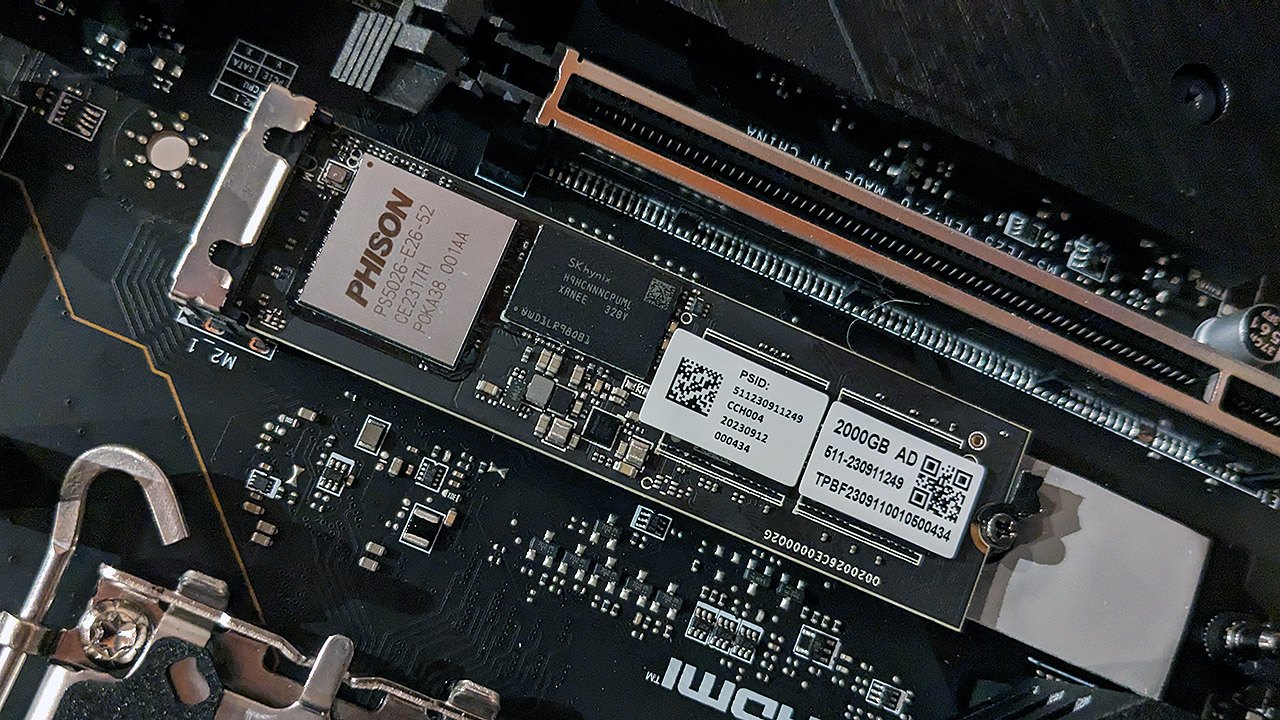Our Verdict
The Teamgroup Z540 2TB is more attractively priced than some of its Gen 5 competitors, but at this time it's still hard to justify buying a Gen 5 drive over a quality Gen 4 drive that's almost as good.
For
- Very good all-round performance
- Good random read performance
- Somewhat affordable - for a Gen 5 drive
Against
- Few tangible gaming benefits
- Difficult to justify over a Gen 4 drive
PC Gamer's got your back
Everyone loves a fast Gen 5 SSD, just not the prices that are attached to them. They still carry too much of a price premium over Gen 4 drives. But, as supply ramps up, the gap is slowly beginning to close. The key word there is slowly.
At $269, the Teamgroup Z540 2TB PCIe Gen 5 SSD is certainly a speedy drive, with peak read and write transfer rates of 12,400 MB/s and 11,800 MB/s respectively, but is it worth the $100+ price premium over a Gen 4 drive when there's little tangible benefit for today's gaming PCs?
Still, that $269 price means it's one of the more affordable Gen 5 SSDs, particularly compared to first wave Gen 5 drives around the 10,000MB/s range. And, it stacks up very well against the $400 Nextstorage X Series 2TB drive our man Jacob recently reviewed, even though the NN5Pro model comes with a bundled heatsink.
Along with the Z540 SSD, Teamgroup also sent over its T-Force Dark Airflow 1 SSD cooler for this review. It's available separately and it's a recommended purchase if you have a motherboard that doesn't include integrated heatsinks. It's quite fairly priced at $27, though at the time of writing it was not available in the UK or Australian markets.
The Z540 is available in 1TB, 2TB, and 4TB capacities. I have the 2TB version on hand. Teamgroup promotes the Z540 as a drive for gamers, but the Z540 will happily serve as an all purpose drive, with a five year warranty and 1400 TBW endurance rating.
The Teamgroup Z540 is a PCIe 5.0 x4 M.2 2280 NVMe SSD. It's rated for up to 12,400 MB/s sequential reads and 11,800 MB/s writes for the 2TB version I have. That's the same as the 4TB version, though the 1TB version comes in slightly slower at 11,700 MB/s and 9,500 MB/s.
Like many currently available Gen 5 drives, it incorporates the Phison E26 controller, 232-layer Micron NAND and it includes 4GB of Hynix DDR4-4266 cache.
The drive as shipped includes a thin graphene strip, though it's not attached and won't be necessary if you're installing it under a motherboard heatsink with an appropriate thermal pad. All Gen 5 SSDs get hot when you're shuffling lots of data around, so it's imperative that your motherboard has some kind of integrated cooling solution. If not, then it is definitely worth spending a few extra dollars on a model with an integrated heatsink, or an aftermarket cooler like the Dark Airflow 1.
The Dark Airflow 1 is a nice looking little device, I think. It's not overly large at 105mm tall and it's thin enough not to interfere with my system's adjacent graphics card. It includes a small fan which I initially plugged into a full speed fan header. And boy was it loud! But that's not a problem as it's a PWM model that's easily adjustable in your motherboard's BIOS. I found setting it to 20% lowered its noise level to a point where it can't be heard over the rest of the system.
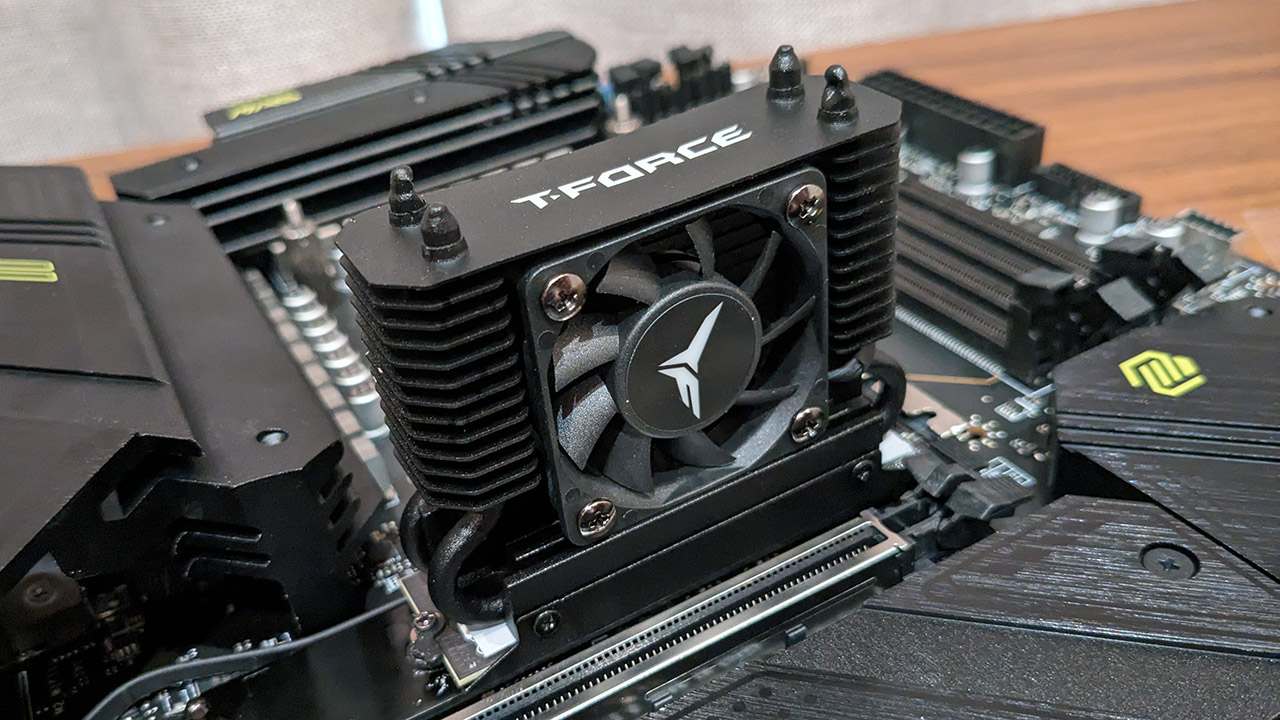
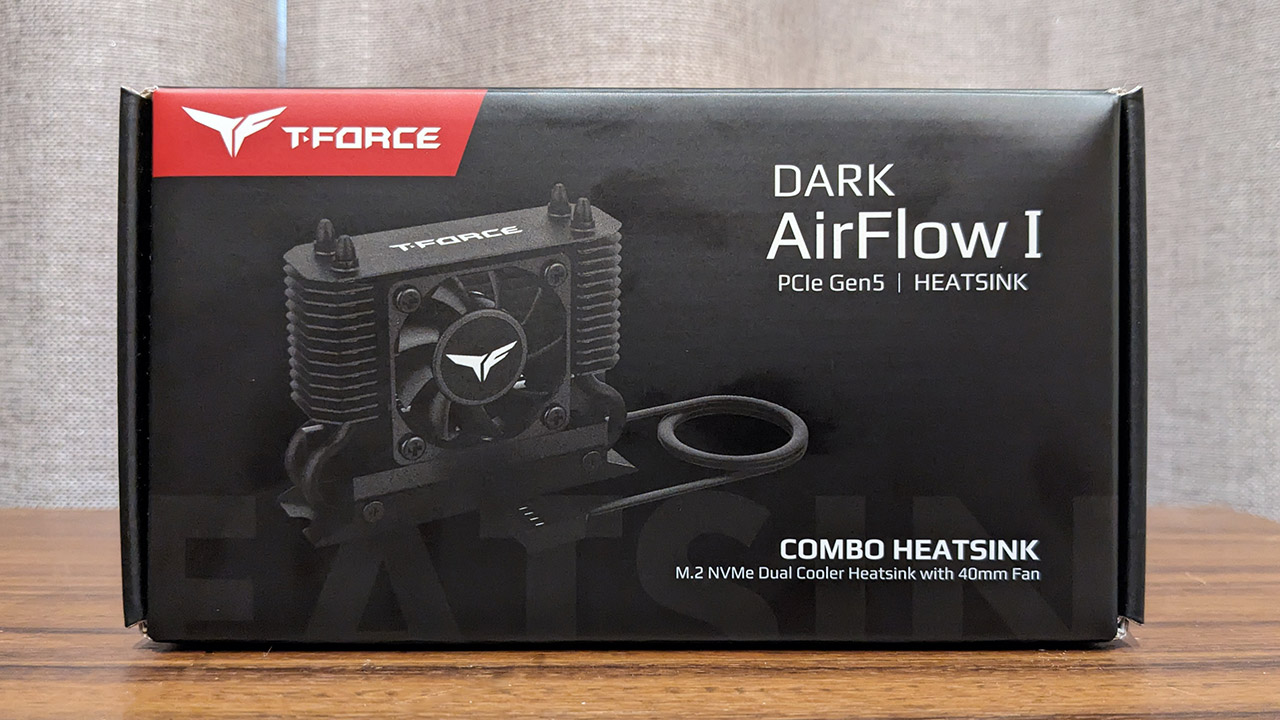
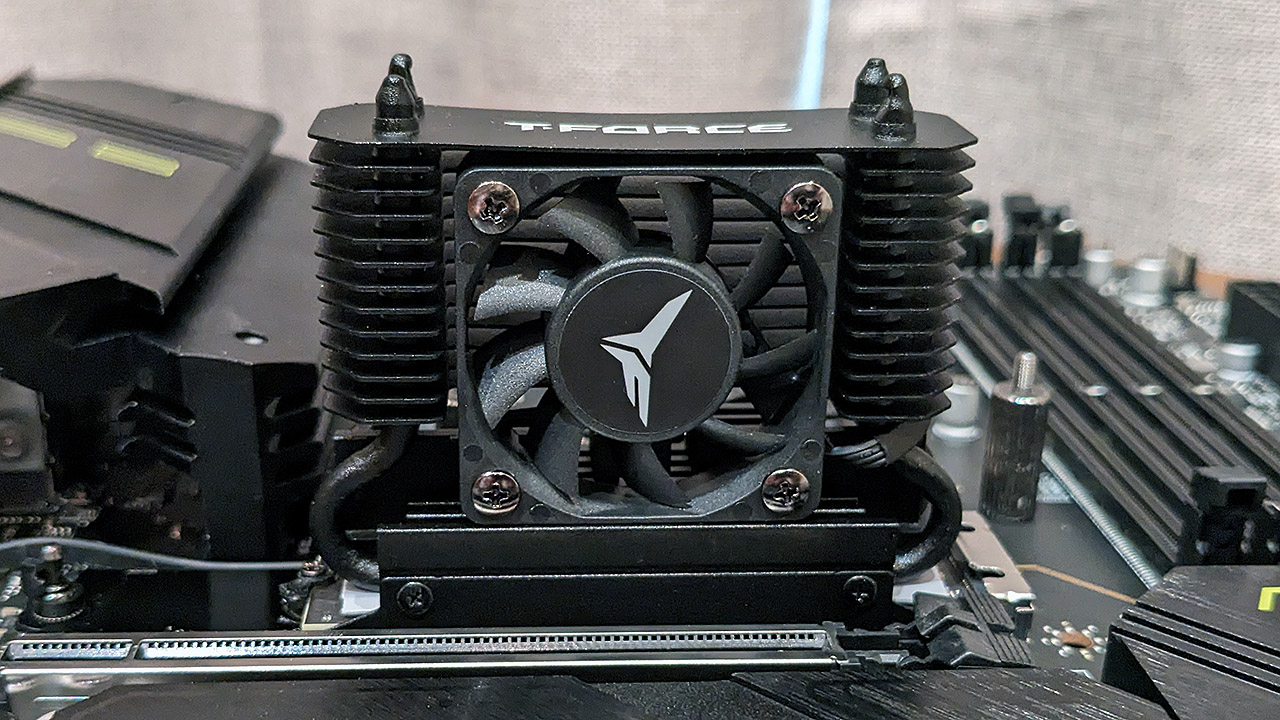
The Z540 has an optional SSD S.M.A.R.T. tool that you can grab from the Teamgroup website. It includes basic drive and system information and the CrystalDiskMark benchmark. It's not as visually appealing as the software suites from the likes of WD or Samsung and I'd like to see some kind of disk cloning tool included, but in my testing, the Teamgroup app worked well.
The Z540 performed pretty much exactly as we'd expect for a Phison E26 equipped drive. It all but matches the far more expensive Nextorage 2TB drive, while costing over 30% less, or 25% less if you factor in the cost of the optional Dark I Airflow cooler.
I'm more than happy to give up an intangible fraction of SSD performance in order to keep $100 or more in my pocket that I could allocate towards a faster GPU, which will deliver a genuinely noticeable performance boost.
The fastest Gen 5 SSDs are not vitally important for gamers when compared to a good Gen 4 option.
A little curiously, the Final Fantasy XIV: Shadowbringers loading time was slower than I expected. That could be due to the vagaries of Windows doing some random things in the background during the test, but a second and third test delivered similar results. I can live with the loss of half a second of loading time. That kind of difference right there is an example of why the fastest Gen 5 SSDs are not vitally important for gamers when compared to a good Gen 4 option.
I was pleasantly surprised by the effectiveness of the Dark Airflow I cooler. Little coolers with little fans are generally undesirable, but when its fan speed is set appropriately, it is genuinely silent. And it's effective too, delivering the lowest peak temperatures I've seen in a Gen 5 SSD to date.
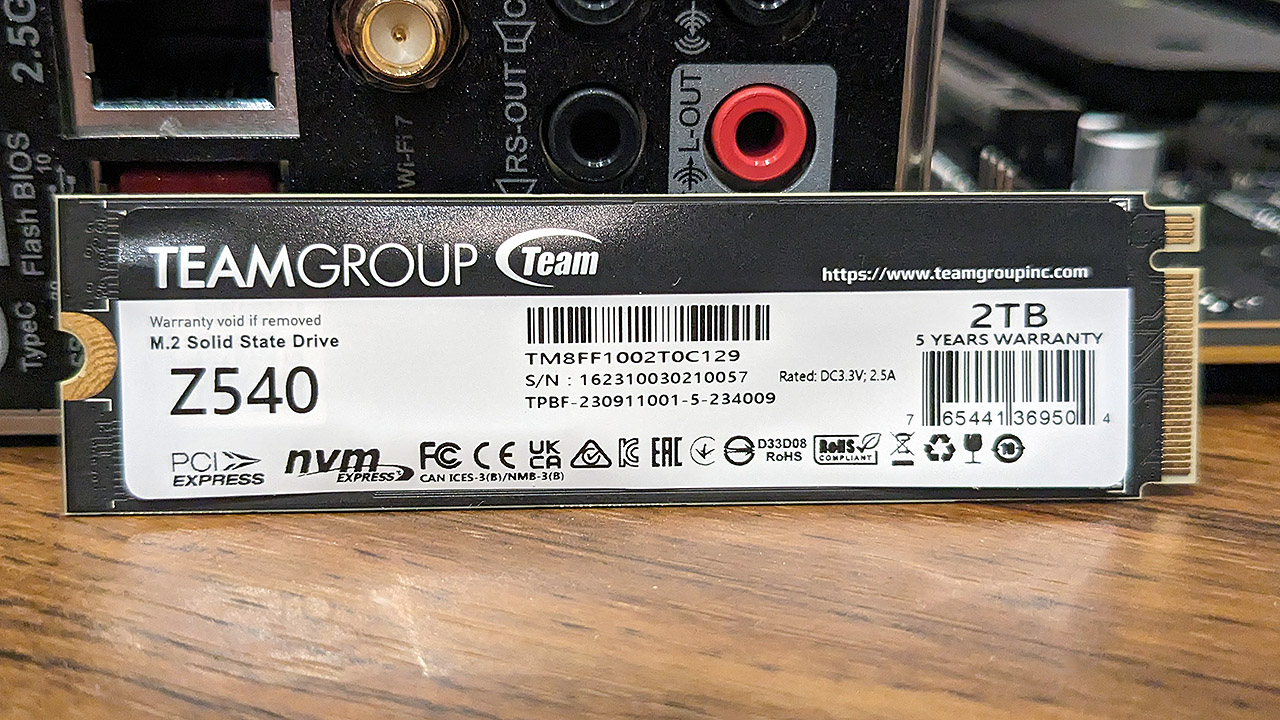
As time goes on, we expect the price of the latest and greatest PC hardware to fall in price. Frustratingly to date, Gen 5 SSDs have not fallen by as much as we'd hoped. It's fine to expect to pay a premium price for the best hardware, but in the case of Gen 5 SSD's, the honest to goodness real world gains are not apparent enough to justify their cost. Sure, if you shuffle terabytes of files around they're worth it, but I'd say a typical gamer doesn't do that all too often.
Having said that, at $260, the Teamgroup Z540 is one of the cheaper Gen 5 drives, and it's a top performing one as well. If you've got a high spec system, then paying extra for a high performance SSD is justified. If you are prepared to pay, you'll be rewarded with performance that all but matches the best SSDs on the market.
If you are prepared to pay, you'll be rewarded with performance that all but matches the best SSDs on the market.
Like all the Gen 5 drives we've tested to date, they can get hot without appropriate cooling. Modern motherboard SSD cooling has come a long way from the days of simple metal plates. Enthusiast motherboards have very good SSD cooling with lots of heatsink surface area, and in that case you won't need to purchase a cooler like the Dark Airflow I. However, if your motherboard is lacking in that area, a small cooler is well worth the investment.
In time, the price of the Teamgroup Z540 will fall. We'll see 14 GB/s drives, new controllers, improved NAND flash and competition from the big guns like Samsung and Western Digital. With increased competition, the price of Gen 5 SSDs will surely become a lot more compelling. But for now, unless you have a high spec system, a much cheaper Gen 4 drive makes more sense for a gaming system.
The tide is ever so slowly turning. I can't see it being too long before a Gen 5 drive like the Teamgroup Z540 adds good value to its very good performance. Knock $50 off and we're nearly there. If/when that happens, it will be a contender for a spot on our list of best gaming SSDs.
The Teamgroup Z540 2TB is more attractively priced than some of its Gen 5 competitors, but at this time it's still hard to justify buying a Gen 5 drive over a quality Gen 4 drive that's almost as good.

Chris' gaming experiences go back to the mid-nineties when he conned his parents into buying an 'educational PC' that was conveniently overpowered to play Doom and Tie Fighter. He developed a love of extreme overclocking that destroyed his savings despite the cheaper hardware on offer via his job at a PC store. To afford more LN2 he began moonlighting as a reviewer for VR-Zone before jumping the fence to work for MSI Australia. Since then, he's gone back to journalism, enthusiastically reviewing the latest and greatest components for PC & Tech Authority, PC Powerplay and currently Australian Personal Computer magazine and PC Gamer. Chris still puts far too many hours into Borderlands 3, always striving to become a more efficient killer.
